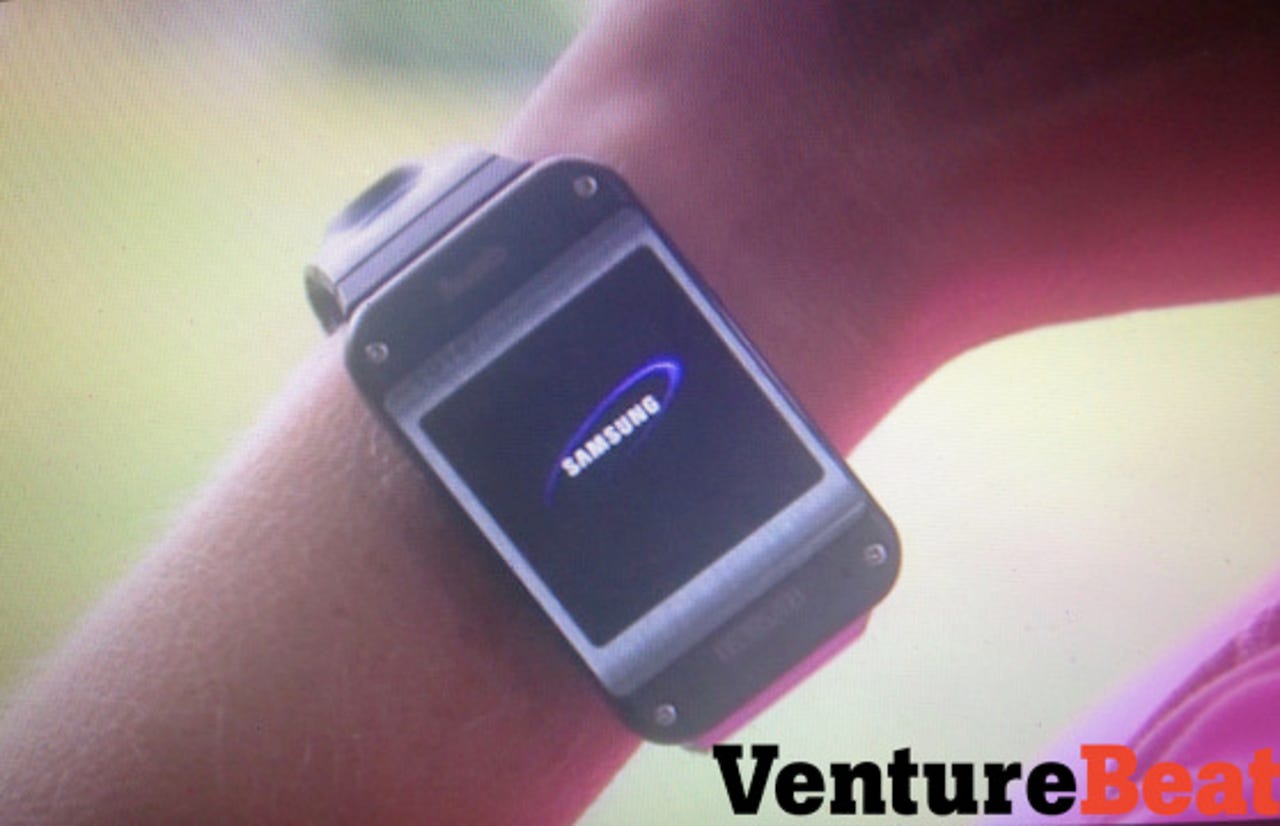If this is Samsung's smart watch, it's already a failure

According to the technology website VentureBeat, this is Samsung's new Galaxy Gear, a.k.a. its "Smart Watch":

I can't vouch for the veracity of these photos or the device portrayed within any more than you can. (Update: It's not, actually. See editor's note below for clarification.)
Featured
But I can say with certainty that if this is is truly Samsung's big entry into the "wearables" market—one considered to be the future of electronics and one estimated to be worth $6 billion by 2016—it is appalling at best.
Look at it. Look at it! It looks like a shrunken smartphone affixed to a plastic watchband. It is the spiritual successor to the Casio calculator watch. It is an accessory that proclaims its geekiness without hesitation. It is an inelegant object for which form and function follow nothing in particular, save for the smartphone from which they have been adapted.
This is all wrong. This is not where the wearables market is going.
Look around—wearable technology is already around you. Bluetooth headsets curl around earlobes. FitBits clutch bra straps and belt loops. Nike FuelBands hang from wrists, pinhole LED lights aglow. This technology is subtle, simple, and suitable for a wide variety of environments. It does not resemble the silicon embedded inside. It is not a tiny helicopter pad strapped to one's wrist.
Apple knows this. Nike knows this. Even Google knows this. When it introduced its Glass product—extremely geeky, in a LeVar Burton-on-Star-Trek kind of way—it marketed the smart glasses with elegant, fashion-focused photos. Though the device got some degree of traction in a glamorous industry (Glass has walked the Diane von Furstenberg runway in New York), its narrative has largely remained in the hands of the geeks who obsess over such things. Larry Page was not happy about Robert Scoble sporting them in the shower for his audience on Google Plus, and it wasn't because of the waterlogging that ensued.
The challenge for the technology industry as it takes further steps into the wearables market is that it must compete in a market that is no longer defined primarily by function. Take glasses, for example: they haven't been the same since the Italian conglomerate Luxottica first licensed the Bulgari brand to stamp on a pair of frames. Since then, an extremely practical object—one designed to help a large portion of the populace see—became a status object. There's a reason glasses are $400 now, and it's not because they work better.
Watches are no different. The digital revolution came...and replaced the low end of that formerly analog market with extremely accurate and inexpensive time-telling technology. Smartphones took that notion even further, replacing the wriststrap altogether. But plenty of folks wear watches, because they are now an accessory no different than a ring on your finger or hat on your head. It's about look—and at the higher end of the market, status. In 2005, news headlines declared that Russian president Vladimir Putin wore a $60,000 Patek Philippe timepiece, while U.S. president George W. Bush wore a $50 Timex. The narrative played into each's reputation as extravagant and populist, respectively. No one talked about how well each device kept the time.
As for Glass, Google has been rumored to be in talks with Warby Parker, the hip New York startup responsible for stylish, low-cost frames that downtown denizens love. The company knows that a geeky pair of specs—$1,500 or otherwise—won't make waves unless the technology is virtually transparent. You need a great pair of glasses before you wire them up.
Which brings me back to Samsung. Even if the pictured device is a prototype on its way to the real thing, it still demonstrates a lacking focus on what really matters: the watch part. Because the people who wear watches in 2013 don't need to wear watches. Which says all that needs to be said about wrist devices, the wearables market in general, and the technology industry's continued inability to sell people products that add up to more than the sum of their parts.
Update 1:30 p.m. ET: Samsung officially announced its Galaxy Gear watch hours after this post was first published. As you can see in CNET's photos of the device, it's much thinner than the version depicted at the top of this post, though it looks very much like an Apple iPad nano with a strap. (Or Sony's Smartwatch, which launched in April 2012.) Is it fashionable? Jury's out.
See also: